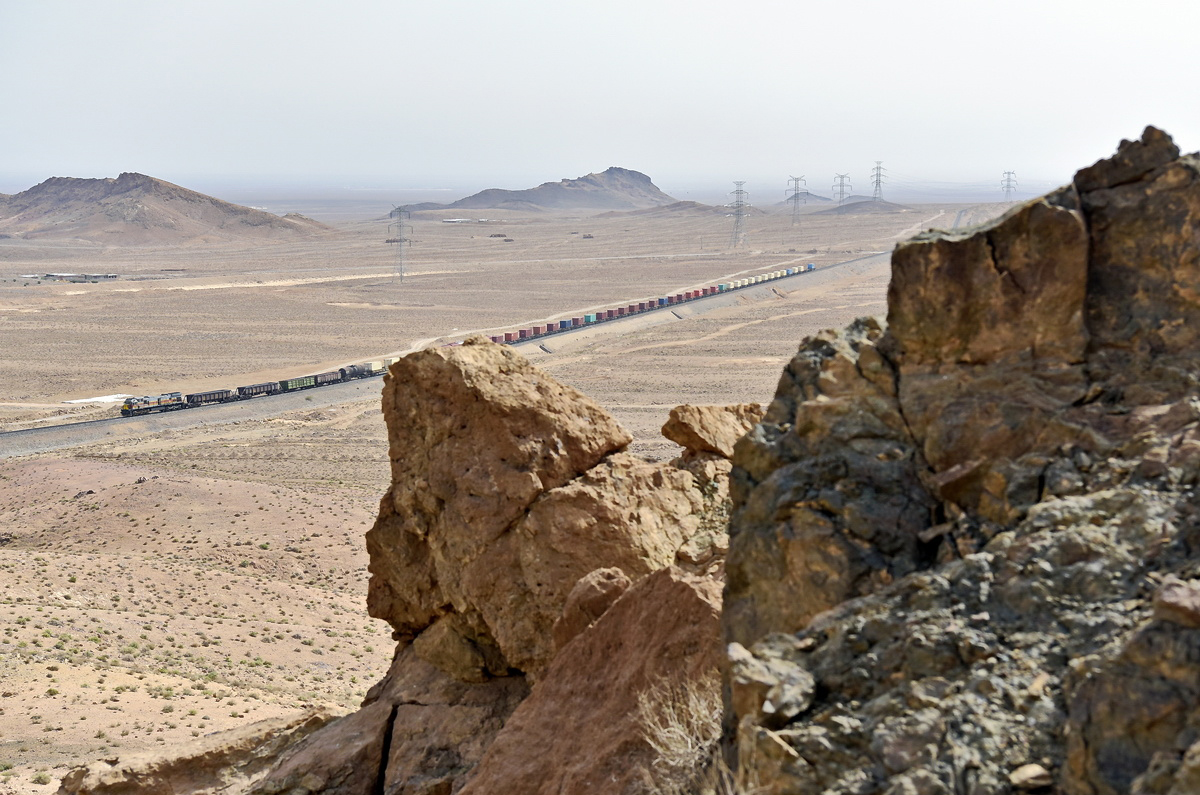Iran intends to increase the share of railroad in freight transportation, to take advantage of this cost-effective mode of cargo movement and lower overall costs.
According to Hossein Ashouri, director of Transit Commission at the Islamic Republic of Iran Railways, Iranian railroads’ share in cargo transportation currently stands at 12% and the plan is to increase the figure by 30% to 195 million tons per year, by the end of the Sixth Five-Year Development Plan (March 2023), IRNA reported.
IRIR Chairman Saeed Mohammadzadeh said rail freight transportation in Iran increased by 25% during a four-year period to over 40 million tons in the last Iranian year (ended March 20, 2017).
Mohammadzadeh noted that the volume of freight transported last year reached an all-time high.
According to Ashouri, about 7.2 million tons of cargo were exported from Iran via railroad during the seven months to Oct. 22, registering a 12% increase compared with the corresponding period of last year.
Ashouri said Iranian exporters will be offered discounts of up to 50% of rail transportation tariff based on the weight and volume of their freight.
As for cargo transit, Ashouri added that 800,000 tons of cargo were transited via Iranian railroads during the same period, indicating a 61% surge year-on-year.
“Sulfur, fertilizers, cotton, aluminum ingots and wooden products were the main transited goods, with Turkmenistan, Uzbekistan, Tajikistan, Azerbaijan and Turkey being the main exporters or importers,” he said.
Notably, the period saw a 46% and 160% growth in the exchange of transit goods between Iran and Turkey as well as Iran and Pakistan respectively.
“Due to the prevailing recession in the region, we have not increased transit tariffs in the past few years. In fact, we have offered discounts, as the prices of commodities have been on the decline,” Ashouri told Mehr News Agency in February.
Iran offers up to 35% discounts on commodities such as cotton, sulfur, fertilizers and mazut shipped from Central Asia and destined for Pakistan, Turkey and the southern Port of Bandar Abbas where the commodities are transported by sea.
Cargoes transported from southern Iranian ports to Turkey and Central Asia currently hold the biggest share in Iran’s rail transit.
Iran has rail connections with Turkmenistan, Pakistan, Turkey and Iraq.
Need For 28,000 Freight Wagons
The IRIR chief said that in order to reach the goal of transporting 195 million tons annually as per the Sixth Plan, 28,000 freight wagons need to be added to the current fleet of 22,000.
To that end, Russia’s United Wagon Company signed a €300 million deal in February to supply 6,000 freight wagons to Iran within three years.
As per the agreement, which is financed by a Russian state-owned insurance company, the Russian company is committed to supplying the wagons within the stated period, of which 4,900 are to be produced in Iran.
Meanwhile, 1,100 CBU (completely-built unit) wagons are to be shipped to Iran within two years, 900 of which are to be imported by February 2018. The 4,900 cars will be produced jointly with three Iranian companies: Arak-based Wagon Pars Company will manufacture 2,200 wagons, Arak Steel 1,250 and the rest will be produced by Wagon Kowsar.
In August, the Industrial Development and Renovation Organization signed a €2.5 billion contract with Russia’s CJSC Transmashholding in Tehran for the joint production of rolling stock in Iran.
Transmashholding CEO Kirill V. Lipa told Financial Tribune after the signing of the contract that the capacity of the joint venture will depend on the depth of localization.
“For assembling, we’re thinking about 300-400 units per year,” he said.
The largest manufacturer of locomotives and rail equipment in Russia with Dutch firm Breakers Investments BV and French engineering group as its stakeholders, Transmashholding will be taking over Iran’s Wagon Pars Company to start manufacturing.
Iran is also developing its network of railroads. Currently, more than 3,500 kilometers of railroads are under construction and according to Minister of Roads and Urban Development Abbas Akhoundi, 1,800 kilometers will become operational by March 2018.
Iran’s strategic location offers great potential for rail transportation. Making Iran a giant continental crossroads are two grand trade routes linking the Pacific, Indian and Atlantic oceans: the International North-South Transport Corridor and China-Europe Silk Road.


